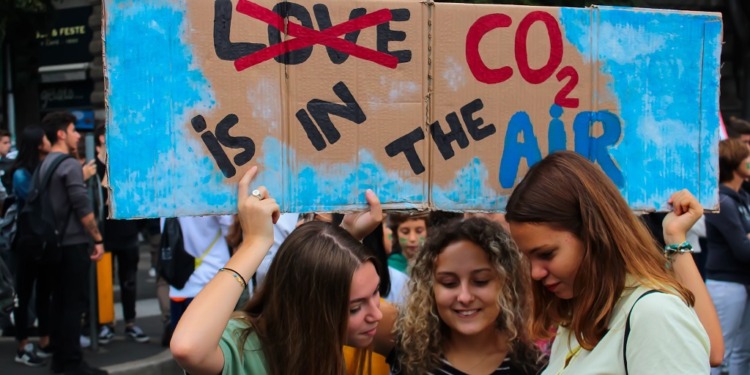Just before a panel discussion on the EU’s developing Carbon Removal Certification Framework (CRCF), I was surprised by the question, why does an organization specializing in carbon markets work on carbon removals?
Even though markets are inherently unsuitable to incentivise the development of carbon removal methods and technologies, policymakers, and companies are discussing carbon markets as the only tool.
Limiting warming to 1.5°C requires immediate and deep emissions reductions during this decade. It is non-negotiable. After that, we will also need high-quality removals (permanent storage with a net-negative emissions balance) to complement – not substitute for – emissions reductions in the medium to long term.
Harnessing the power of carbon removals requires enabling policy. However, neither the unregulated global carbon credit market nor the EU’s Emissions Trading System (EU ETS) are geared to offering the high prices required to finance the rollout of high-quality and expensive technologies.
If left to market forces, which favor the cheapest offsetting options, cheaper forestry and soil removals would be developed first, or the market may even stop there.
The far more expensive and effective technological carbon removals would be a much harder sell. Even if only high-quality and expensive (technological) carbon removals were available on the EU carbon market, they would find few buyers.
Raising or lowering the bar
The first EU policy initiative to regulate carbon removals, the CRCF, currently in the legislative pipeline, threatens to pave the way to the wrong choices for incentivizing carbon removals.
The overall climate policy architecture of the EU still needs an instrument that defines carbon removals, assigns them a clear role, and incentivizes their development.
The CRCF, proposed by the European Commission last autumn, now in the co-decision process between the Council and Parliament, is supposed to fill this gap.
However, it does so partially because it only deals with the certification, i.e. the quantification and sustainability assessment of removals, though it does this insufficiently because the proposed ‘sustainability objectives’ are very vague and they’ll take a long time to be implemented. Moreover, the CRCF neither tackles their uses nor the policy instruments with which they will be promoted.
RELATED ARTICLES: US Invests $1.2 Billion in Carbon Removal Innovation | Why Carbon Credit Schemes May Not Work as Intended | Promising New Carbon Capture Method: Climate Fix or False Hope? |
Omission reductions
These omissions create major problems because the framework is so indiscriminate that it leaves the door open for removals to be used to offset emissions.
Worryingly, the CRCF is set to permit the certification of short-term carbon storage, such as through carbon farming and in so-called ‘carbon storage products’. Moreover, temporary and permanent forms of storage and emission reductions in the land sector are treated equally in the proposal, generating the same kind of accounting unit.
This ‘one-size-doesn’t-really-fit-anyone’ approach is problematic because it equates carbon storage lasting centuries or millennia with storage lasting mere days, months, or years.
Certification failure
The CRCF does not guarantee high-quality certification either because its quality criteria are weak and vague. It neither contains safeguards against removals slowing down or replacing emission reductions (so-called mitigation deterrence) nor against overreliance on removals.
The CRCF, in sum, is a weak effort of an outgoing Commission and so vague it might not respect the Treaty on the Functioning of the EU. The legislative process is unlikely to remedy its shortcomings, leaving it to the next Commission to fix the CRCF or live with its numerous failings.
Rather than an effective climate tool, the CRCF threatens, on the supply side, to become a money-making machine for specific groups, such as large agri-businesses and the forestry and paper industries, rather than to make sense from a climate perspective in supporting permanent removals and climate-friendly activities of land-owners.
On the demand side, the CRCF is at risk of becoming a greenwashing machine. Even though the CRCF does not cover the use and incentivization of removals, it allows for credits generated in Europe and certified under the CRCF to be sold on the voluntary carbon market, i.e. private companies would buy them to offset their emissions.
More problematically, stakes are also being placed for integrating removals into existing policy instruments, such as the EU ETS and the Effort Sharing Regulation (ESR). This means governments and companies could avoid real climate action by using removal credits to delay emission reductions through offsetting.
No offsetting
Two of CMW’s key demands for carbon removals are, first, restricting their use to the climate function that science assigns them, i.e., balancing the last unavoidable emissions and reducing historical concentrations of CO2 in the atmosphere.
Second, no offsetting with removals.
Removals certified under the CRCF must not replace emission reductions with offsetting. Offsetting would weaken emission reduction efforts and imperil the EU’s climate targets.
Investment in carbon removals must instead happen via public funds (such as public procurement), using ‘polluter pays’ revenues (from the EU ETS, for example), or private funding (such as via climate contributions). We have suggested amendments to the CRCF to this effect.
Building a firewall
Given the flaws of the CRCF, the next biggest opportunity to give carbon removals their correct place in the EU’s climate policy architecture is the definition of the EU’s 2040 target.
The European Commission conducted a public consultation on this target in May, and the European Scientific Advisory Body on Climate Change (ESABCC) published its recommendation for the 2040 target in June (90-95% net emission reductions compared to 1990).
Sometime at the start of 2024, the Commission will likely publish its target proposal. The crucial aim of this target setting is not just its overall percentage but that it gets divided into three targets: one for emission reductions, a second target for land-based sinks, and a third for technical removals.
A continued conflation of reductions and removals into a net target must be avoided. The EU can determine the best instruments for reaching each of them based on separate targets.
EU governance framework for carbon removals
And this is exactly what we at CMW intend to help with. CMW aims to bring together a broad set of organizations (progressive businesses, think tanks and academia, civil society, and policymakers) to discuss how to set and build on dedicated separate targets.
This will involve determining what funding and incentivization scheme to set up for the different types of removals.
This alternative game plan will enable civil society to implement a visionary and workable blueprint that can help inform and shape the policy process.
Editor’s Note: The opinions expressed here by the authors are their own, not those of Impakter.com — In the Featured Photo: Climate Protest. Featured Photo Credit: Unsplash.










